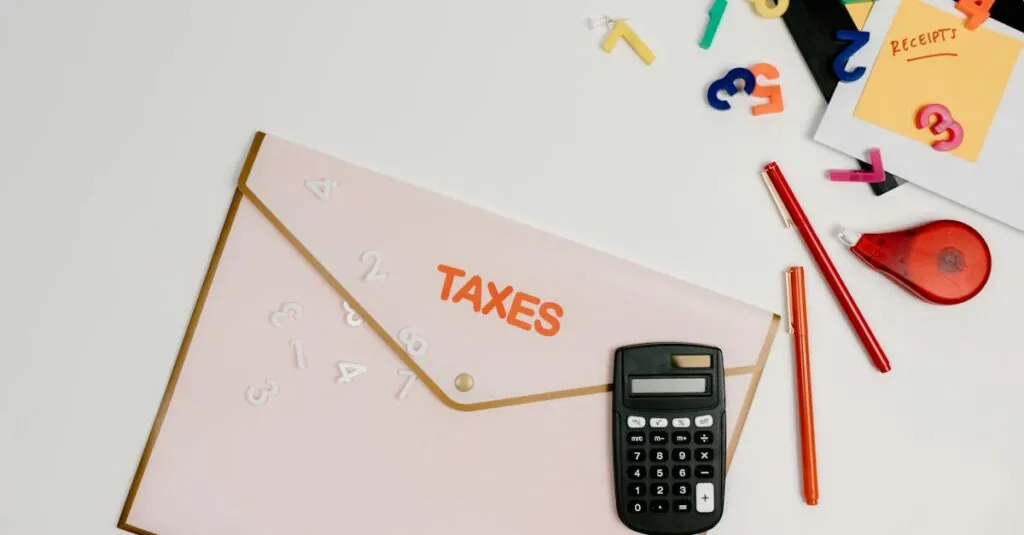Table of Contents
ToggleChanging your payment method on an iPhone might seem as daunting as finding a needle in a haystack, but it doesn’t have to be. Whether you’re tired of seeing that old credit card or just want to switch things up, making adjustments is easier than convincing your cat to take a bath. With just a few taps, you can ensure your payment options are as fresh as your favorite playlist.
Understanding Payment Methods on iPhone
iPhone users can choose from various payment methods, making it easy to select the one that fits their needs. Understanding these options simplifies the process of managing transactions and subscriptions.
Types of Payment Methods Available
Credit and debit cards represent the most common payment methods. Users can link these cards directly to their Apple ID. PayPal offers an alternative for those preferring online payment services. Apple Cash allows users to send and receive money instantly with friends and family. Moreover, gift cards can be added to an Apple account for in-store or online purchases. Lastly, mobile carriers provide a billing option for users who prefer to charge purchases to their phone bills.
Benefits of Changing Payment Methods
Adjusting payment methods enhances convenience, allowing users to access the preferred options for purchases. Updating information can prevent declines during transactions, ensuring smooth access to apps, music, or subscriptions. When users add a new card or payment method, they may also take advantage of promotional offers tied to specific accounts. Enhanced security comes with regularly updating payment details. Additionally, adjusting payment preferences suits changing financial situations or preferences, ensuring users can manage their expenses effectively.
Step-by-Step Guide to Change Payment on iPhone
Changing payment methods on an iPhone is straightforward. Follow the steps below to ensure your payment options are up to date.
Accessing Your Payment Settings
First, open the Settings app on the iPhone. Scroll down and tap on your name at the top. Next, select Payment & Shipping from the available options. Users may need to enter their Apple ID password for added security. Afterward, the payment settings screen displays current payment methods associated with the account. Review these options to assess if any changes are needed.
Updating Your Payment Information
To modify your payment details, tap on Add Payment Method or select an existing one. Enter the required information, including card number, expiration date, and billing address. Ensure accurate details to avoid transaction issues. After inputting the changes, tap Done to save the updated payment method. Users can also remove outdated payment methods by selecting them and choosing the Remove option. The updated information takes effect immediately for future transactions.
Troubleshooting Common Issues
Encountering issues while changing a payment method on an iPhone can hinder the process. Identifying common problems and their solutions makes it easier to resolve any complications.
Payment Method Not Accepted
Users sometimes face challenges when their preferred payment method is not accepted. Compatibility issues often arise with specific cards or services. For example, certain debit or credit cards may not support Apple services. Verifying that the payment method aligns with Apple’s requirements enhances success. Double-checking billing addresses and card details ensures they match the bank’s records. If the problem persists, users can consider contacting their bank for further verification.
Error Messages When Updating Payment
Error messages during the update process can be frustrating but are often straightforward to fix. Common messages may relate to incorrect information or account verification issues. Users should ensure all entered details, such as card numbers and expiration dates, are accurate. If verification fails, reset the Apple ID password for improved account security. Restarting the iPhone can also clear temporary glitches. Checking Apple’s system status page may reveal if a service outage is causing problems.
Keeping Your Payment Information Secure
Maintaining the security of payment information on an iPhone is crucial for safe transactions. Users can adopt simple strategies to enhance their security.
Best Practices for Security
Protect personal information by regularly reviewing payment details. Avoid using public Wi-Fi networks when making purchases, as these are often less secure. Enable Face ID or Touch ID for added authentication layers during transactions. Regularly update the iOS to benefit from the latest security features. Moreover, users should monitor their bank statements and transaction histories for any unauthorized activity. Keeping passwords unique and complex adds another layer of security. Utilizing password managers can simplify this process, ensuring users maintain robust password habits.
Enabling Two-Factor Authentication
Two-factor authentication (2FA) offers enhanced protection for Apple ID accounts. Enabling 2FA requires users to provide not just the password but also a verification code sent to a trusted device. This additional step significantly mitigates unauthorized access risks. To activate 2FA, navigate to Settings, tap on the Apple ID name, and select Password & Security. Users should follow the on-screen instructions to set it up. Once activated, users receive alerts about account access attempts, bolstering security. Regularly updating the trusted devices list ensures all devices used for verification are current and secure.
Changing payment methods on an iPhone is a straightforward process that can enhance convenience and security. Keeping payment information up to date ensures smooth transactions and access to promotional offers. By following the outlined steps and best practices for security, users can manage their payment options with confidence. Regularly reviewing payment details and utilizing features like two-factor authentication further protects financial information. Embracing these practices not only simplifies transactions but also supports a more secure digital experience.




